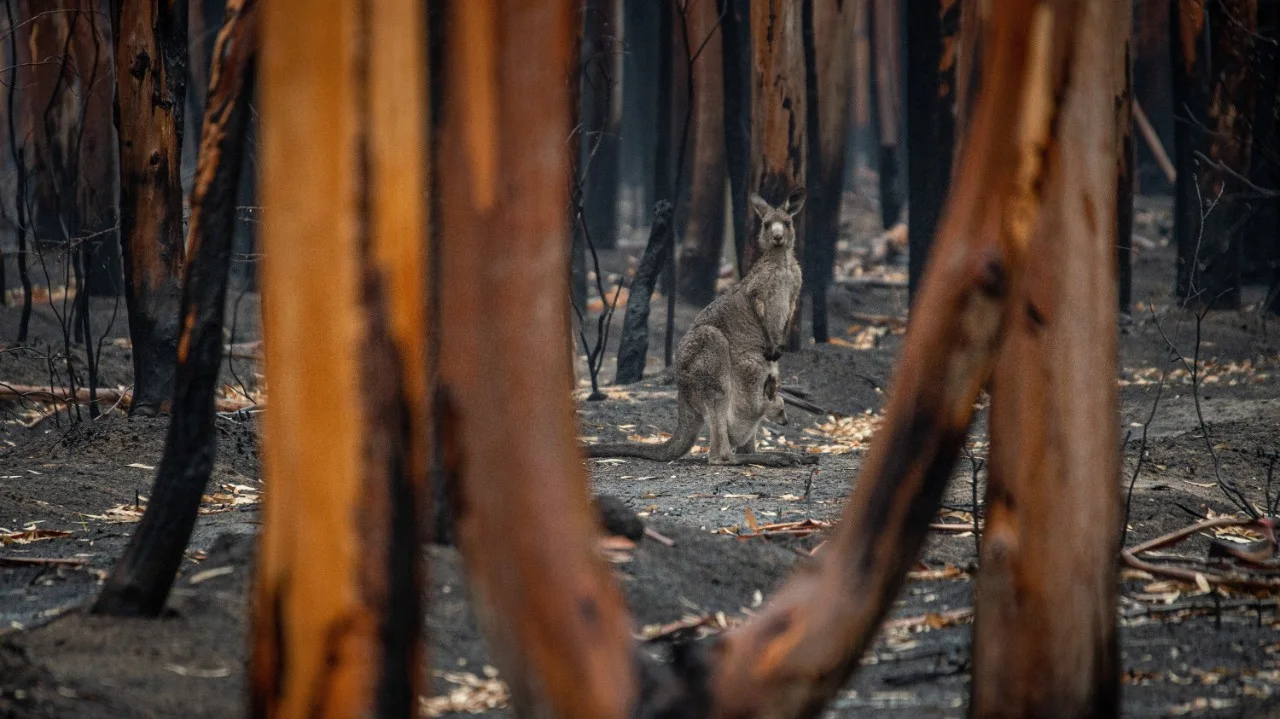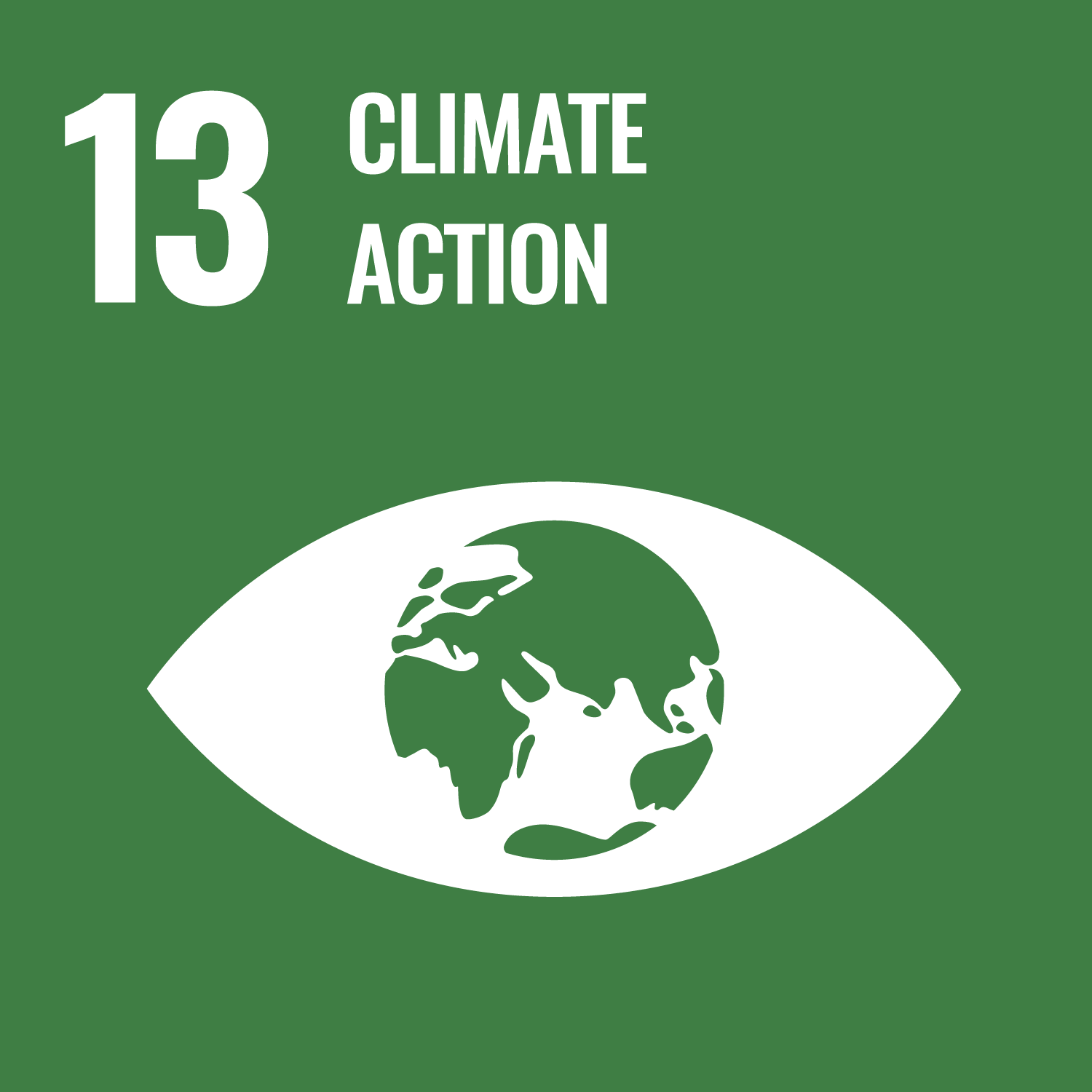You can search for courses, events, people, and anything else.
Matthias Boer setting up a drone to take observations in Bilpin, NSW.
At the height of the last drought in late 2019, when eastern Australia was suffering through its hottest and driest year on record, environmental scientist, Dr Rachael Nolan, and her colleagues at Western went to see how the eucalypt forests near Armidale in New South Wales were faring.
“As far as you could see, the forest had turned to brown,” recalls Nolan. “The leaves were crispy.” The researchers did what any good clinician would do when faced with such a sick patient: they took measurements and samples, and tried to work out what had gone wrong.
The ‘why’ was easy — the drought had pushed these trees to the brink. But the ‘how’ was harder to establish. Their research found that the trees’ circulatory systems had effectively collapsed: hydraulic failure. The fact that this knowledge was so late in coming, in a country as drought-prone as Australia, reveals the paucity of understanding of how native vegetation responds to extremes of heat, drought and fire.
This is one of many vital research projects underway at the Hawkesbury Institute for the Environment at Western, which aim to better understand how the Australian bush will cope with and recover from the heatwaves, droughts and bushfires that are likely to increasingly affect a warming world.
A DRY AND ARID LAND
These projects became even more significant in the wake of the devastating 2019/2020 bushfire season that affected vast swathes of the eastern Australian landscape, burning some 5.8 million hectares, mainly forests, including the habitat of many endangered and threatened flora and fauna species.
“It blew us all away,” says Western’s Associate Professor Matthias Boer, who leads the fire research group at the Hawkesbury Institute for the Environment. Since that terrible season, Boer and colleagues have been heavily involved in research to inform enquiries into the Black Summer fires and to help fire authorities prepare for future events. Boer, Nolan and PhD student, Kathryn Fuller, form one of four nodes of the NSW Bushfire Risk Management Research Hub, conducting a range of projects around bushfire risk and resilience.
One area of focus is the impact of the drought and how the dryness of the fuel load and combustible plant materials, might have contributed to its flammability and the severity of the fires.
An interesting finding of this project was that the amount of fuel in forested areas before the 2019/20 bushfires wasn’t actually higher than average, despite news headlines suggesting the opposite. The difference was the moisture content of those fuels. “We showed that fuels throughout eastern Australia’s forests were the driest they had ever been, they’d been dry for a very long time, and they’d dried out sooner,” Nolan says.
Historical data show that when fuel dryness reaches a critical point, fire danger rises dramatically. Research led by Nolan compared historical data on fuel moisture across a section of eastern Australia with maps of areas that were burned between 2000 and 2013, and found clear evidence of a threshold for dryness beyond which fire becomes significantly more likely.
The challenge is how to apply this information in forecasts of future fuel dryness. “It’s useful to know historically that these fires happened when it was really dry, the next step is to use this knowledge to predict where forest fuels are going to get to those critical dryness levels in the next week or the next month,” Nolan says.
Damage from the 2019/2020 bushfires is still apparent in May 2021 at the Patterson Range Trail, in Bilpin NSW.
Need to know
- Drought conditions increase fuel availability.
- Fuel dryness contributes to fire risk.
- Fuel moisture forecasts could be helpful in fire risk management.
FUEL DRYNESS FORECASTING FOR CONTROLLED BURNS
This is where Dr Anne Griebel’s geographical work on forecasting fuel moisture comes in. At Western, she’s leading a project that is trying to establish links between the eco-physiological properties that determine how different vegetation types respond to drought stress and how this affects the dryness of the fuels in that landscape.
“We’re trying to figure out when it is too dry and a wildfire is really a high risk, or if it’s too wet for the planned burns to successfully go ahead,” Griebel says. The aim of this modelling, which is being done in conjunction with the New South Wales Bushfire Risk Management Research Hub and colleagues from the Australian National University, is to forecast the level of fire risk in a particular area and vegetation type from meteorological forecasts and satellite remote sensing.
“That’s a huge step to identify the key parameters that influence fuel moisture dynamics and then to characterise their variability across the landscape,” Griebel says. The project combines ground-based measurements of moisture and vegetation characteristics with remotely sensed indicators, to build the first biophysical model of fuel moisture in these landscapes. It’s information that fire authorities need when planning hazard reduction burns, but currently don’t have at the desired resolution in space or time.
“Deciding on where to burn is not just about weather, you need to know if the fuels in a particular area are dry enough to burn but not too dry to risk an escape,” Boer says. “So it is a great opportunity for us to provide information that helps make those management decisions.”
Understanding fire in the Australian landscape is not just about predicting when and where a fire might occur. There’s also a need to understand what happens after a fire event, and how the landscape recovers, particularly a landscape that is already stressed by drought.
“The impacts from the drought are potentially more important than what happened during the fires because they may affect the capacity of these forests to recover,” Nolan says. “What’s the recovery like, and how does that relate to fire severity and perhaps how does that relate to what the drought conditions were at that location beforehand?”
“Deciding on where to burn is not just about weather.”
Members of Western’s Fire Research Group: Matthias Boer, Rachael Nolan, and Anne Griebel.
Part of the challenge with studying drought-related tree die-offs is that it’s difficult to get records of when and where trees have been severely affected by drought. A citizen science project called ‘The Dead Tree Detectives’, initiated by Distinguished Professor Belinda Medlyn and Associate Professor. Brendan Choat at Western is one attempt to track these die-offs, with the hope that finding these trees will enable researchers to study what happens to them over time: do they recover, and what does that recovery look like?
“When they lose their leaves because of drought, then they can become more vulnerable to other things like insects or fire, and so it’s really complex to disentangle what’s going on,” Nolan says.
The research, which is supported by the Hermon Slade Foundation, is also making use of satellites to monitor the recovery of burned and unburned areas of bush using sensing from satellites.
Extreme bushfire events such as the Black Summer fires of 2019/20 are likely to be more common in eastern Australia if drought conditions occur more often in a warmer world. Western’s bushfire research will help understand the conditions that lead to fires and guide management and responses to them. “We’re really interested in gaining a more quantitative understanding of fire regimes and how they emerge from environmental conditions, and socioeconomic conditions as well,” Boer says. “We can use that understanding to support fire managers in their decision-making and achieve better outcomes.”
Meet the Academic | Associate Professor Matthias Boer
Associate Professor Matthias Boer has a background in the geosciences (Utrecht) and spent his early research career with the Spanish National Research Council working on arid zone ecohydrology, soil erosion and land degradation. A postdoctoral fellowship with CSIRO in Alice Springs brought him to Australia in 1999 and introduced him to the modelling of climate-vegetation-fire interactions, which would become one of his key research areas when he joined The University of Western Australia in 2004. At UWA he studied fire regimes from a complex systems perspective and led an influential study on the effectiveness of prescribed burning in mitigating fire risk.
After a short period with Cemagref in France, Matthias joined the Hawkesbury Institute for the Environment (HIE) when it was established in 2011, where he initiated the fire research group and built strong collaborations with the fire research community in SE Australia. At HIE his research focused increasingly on the biophysical modelling of fire regimes and how they might change under projected climate change and rising atmospheric CO2 concentrations, as well as on applications of this knowledge in the prediction of forest flammability and bushfire risk. Matthias is a founding member and senior research leader in the NSW Bushfire Risk Management Hub (2021 Eureka Prize for Applied Environmental Research).
Meet the Academic | Dr Rachael Nolan
Dr Rachael Nolan is a Senior Research Fellow at the Hawkesbury Institute for the Environment at Western Sydney University. Rachael’s research focuses on how ecosystems respond to disturbances, such as fire, and what this means for ecosystem services such as carbon sequestration, habitat values and water resources. With the NSW Bushfire Risk Management Research Hub, Rachael is currently developing better tools for forecasting bushfire risk and planning prescribed burns.
Rachael was awarded her PhD in 2013 from The University of Melbourne for her research on the effects of the Black Saturday bushfires on Melbourne’s water supply catchments. She has since undertaken research at the University of Wollongong, University of Technology Sydney and Western Sydney University on fire ecology and plant eco-physiology. Rachael was recently awarded a Senior Research Support Program Fellowship by the University to continue her bushfire research. She has over 46 publications and 1400 citations and currently leads research grants worth over A$1M. Rachael was awarded the 2020 Forests Young Investigator of the year and was part of the Bushfire Hub team that won the 2021 Eureka Prize for applied environmental research.
Meet the Academic | Dr Anne Griebel
Doctor Anne Griebel is a Postdoctoral Research Fellow at the Hawkesbury Institute for the Environment at Western Sydney University. She joined the HIE in 2016 and is currently working on fuel moisture modelling as part of an ARC Linkage grant on ‘Forecasting live fuel moisture content, the on/off switch for forest fire’ (2021-2023). Previously, she incorporated remotely piloted aircraft systems to monitor changes in ecosystem properties as Postdoctoral Research Fellow in RPAS-based remote sensing (2019-2020) and worked on pressing questions about how heat and drought stress and parasitic plants affect tree health as Postdoctoral Research Fellow in biosphere-atmosphere flux ecology (2016-2019). Anne holds a Specialist Certificate in Teaching for Graduate Researchers (First Class Honours) and a PhD degree from the University of Melbourne (2016), and completed her Master’s degree in Geography with distinction at the Rheinische Friedrich-Wilhelms University of Bonn in Germany (2011).
Anne is currently chief investigator on an ARC Discovery grant on "Tree-mediated methane fluxes: A new frontier in the global carbon cycle" and at a Hermon Slade Foundation project on "Quantifying forest mortality after unprecedented drought and bushfires in Eastern Australia". In addition, she has been the sole recipient of over $165,000 awarded through 14 individual and competitive grants and stipends. Anne has published 20+ journal articles and has given over 35+ presentations about her research at national and international conferences.
Credit
© Cybele Malinowski © Jo-Anne Mcarthur/unsplash
Future-Makers is published for Western Sydney University by Nature Research Custom Media, part of Springer Nature.













